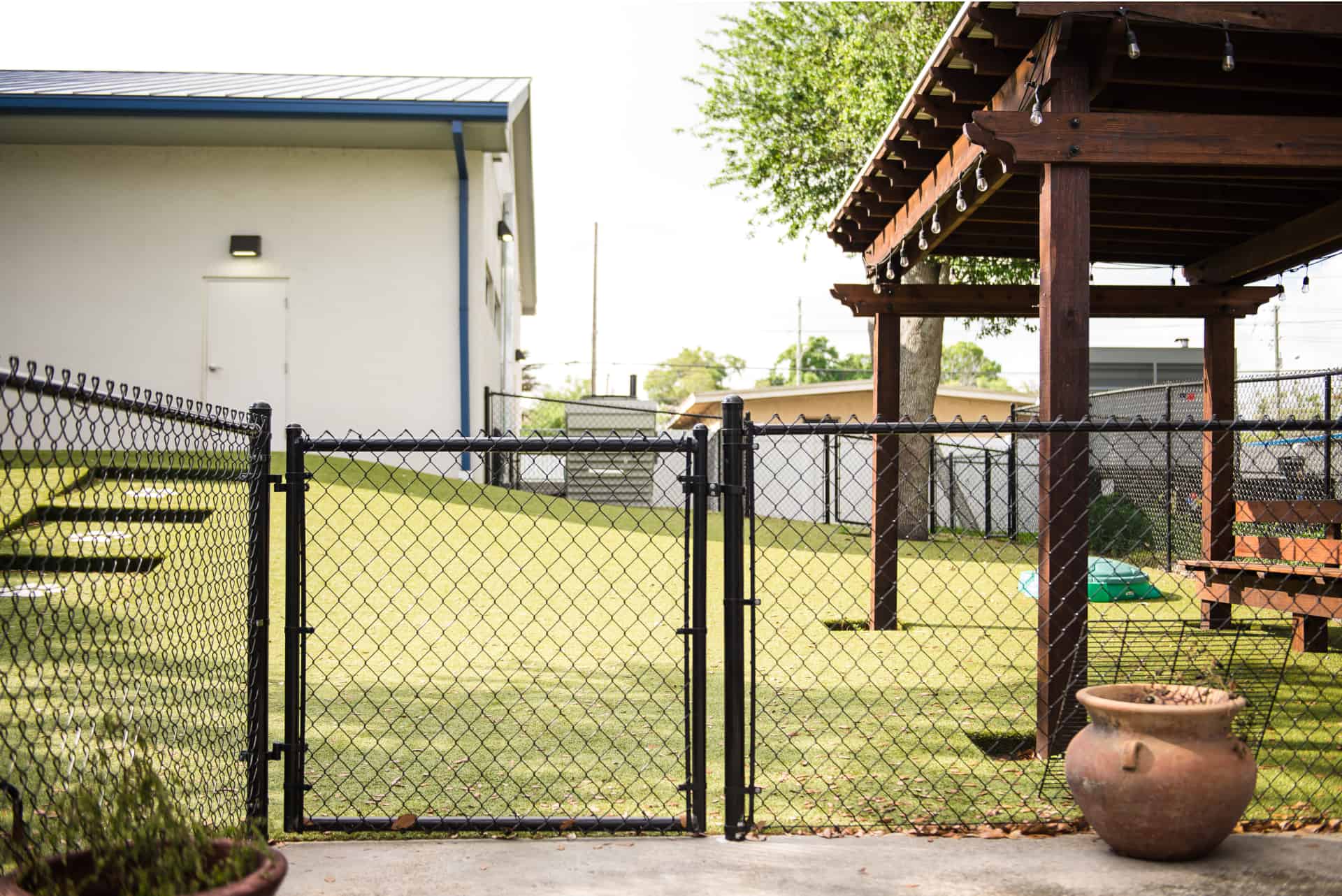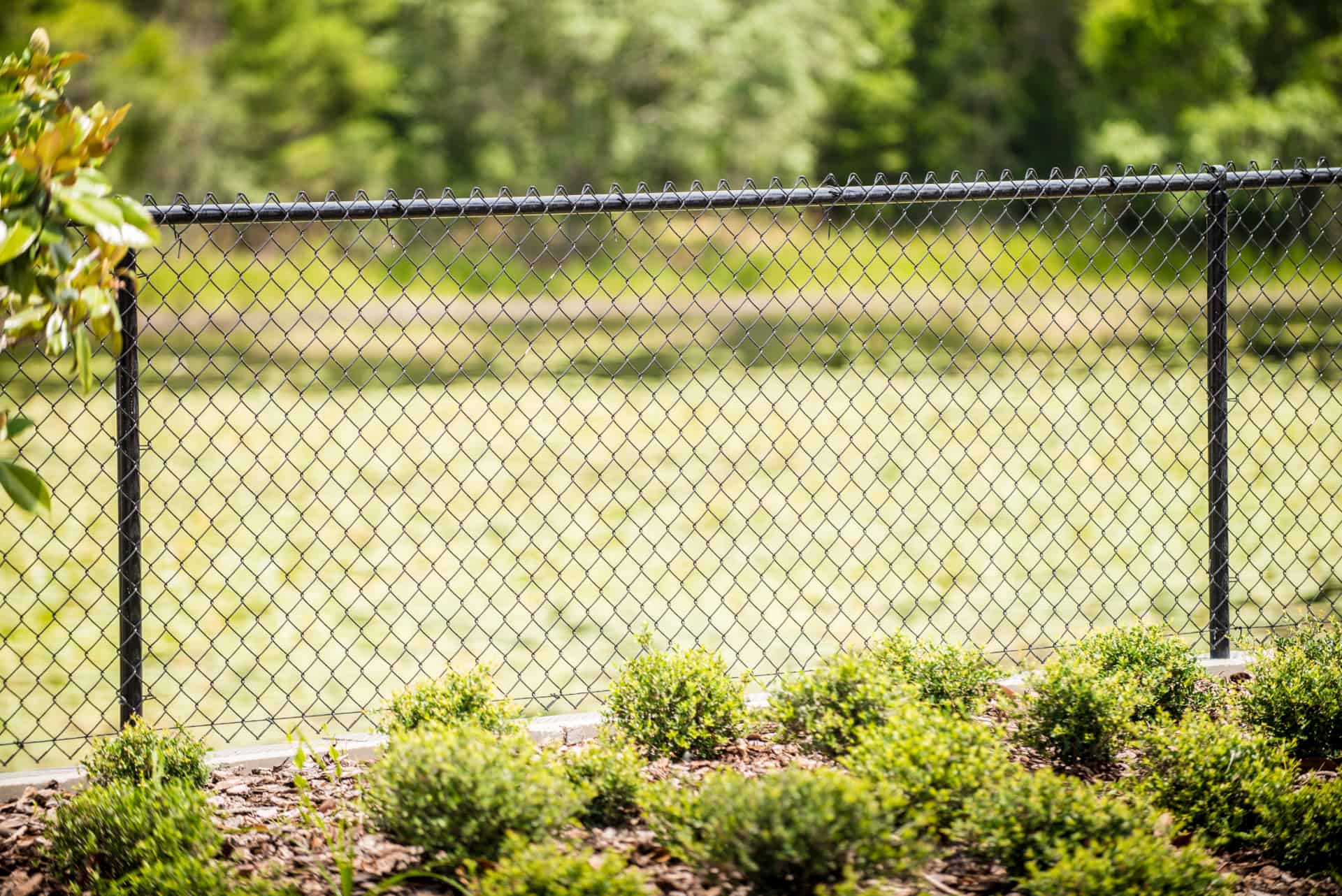
Chain link fences are known for their durability, affordability, and low maintenance requirements, making them a popular choice for both residential and commercial properties. However, like any outdoor structure, a chain link fence still requires regular upkeep to maintain its appearance and functionality. Proper maintenance not only prolongs the life of your fence but also ensures it remains a secure and attractive barrier. In this article, we will explore essential tips for maintaining your chain link fence, covering everything from cleaning and rust prevention to repairs and enhancements.
1. Regular Cleaning
One of the simplest yet most effective ways to maintain your chain link fence is through regular cleaning. Dirt, debris, and grime can accumulate on the fence over time, leading to discoloration and potential damage. Regular cleaning helps to keep the fence looking new and prevents the buildup of substances that could lead to corrosion.
Steps to Clean Your Chain Link Fence:
- Start by Rinsing: Use a garden hose to rinse off loose dirt and debris. This initial rinse will make the cleaning process easier.
- Scrub with a Brush: Use a soft-bristle brush and a solution of mild soap and water to scrub the fence. Pay attention to areas with stubborn stains or bird droppings.
- Rinse Thoroughly: After scrubbing, rinse the fence thoroughly with water to remove any soap residue.
- Drying: Allow the fence to air dry completely. Avoid using a high-pressure washer as it can damage the coating of the fence.
Frequency: Depending on your environment, cleaning the fence once or twice a year should suffice. However, if you live in an area with heavy pollution or near the ocean, more frequent cleaning may be necessary.
2. Rust Prevention and Treatment
Rust is one of the biggest threats to the longevity of a chain link fence, especially in areas with high humidity or salty air. Preventing and treating rust is crucial to maintaining the structural integrity of the fence.
Preventing Rust:
- Apply a Protective Coating: Many chain link fences are coated with galvanized zinc, which helps prevent rust. Over time, this coating can wear off, so it’s a good idea to apply a rust-inhibiting paint or a spray-on protective coating every few years.
- Inspect for Damage: Regularly inspect the fence for any signs of damage to the coating, such as scratches or chips. Repair these areas promptly to prevent rust from forming.
Treating Rust:
- Sand the Affected Area: Use sandpaper or a wire brush to remove rust from the affected area. Be sure to remove all traces of rust to prevent it from spreading.
- Apply a Rust Converter: Once the rust is removed, apply a rust converter to neutralize any remaining rust and prevent further corrosion.
- Reapply Protective Coating: After treating the rust, apply a fresh coat of rust-inhibiting paint or protective spray to the area.
Tip: If your fence is located near a source of moisture, such as a sprinkler system or garden hose, adjust the positioning to minimize direct water exposure.
3. Check for Loose or Damaged Parts
Over time, parts of your chain link fence may become loose or damaged due to weather conditions, physical impact, or normal wear and tear. Regular inspections will help you identify and address these issues before they become bigger problems.
What to Look For:
- Loose Posts: Check the posts to ensure they are securely anchored in the ground. Loose posts can cause the fence to sag or lean.
- Damaged Links: Inspect the chain links for any signs of damage, such as breaks or bends. Damaged links can compromise the security of the fence.
- Worn Tension Bars: The tension bars that hold the chain link fabric to the posts can wear out over time. Ensure they are tight and in good condition.
- Loose Fasteners: Inspect the fasteners, such as bolts and screws, to ensure they are tight and secure.
Repairing Loose or Damaged Parts:
- Tighten Loose Fasteners: Use a wrench to tighten any loose bolts or screws. Replace any fasteners that are rusted or stripped.
- Straighten Bent Links: Use pliers to straighten any bent links. For severely damaged sections, it may be necessary to replace the affected part of the fence.
- Re-anchor Loose Posts: If a post is loose, dig around it and add gravel or concrete to stabilize it. Ensure the post is level before the material sets.
4. Trim Vegetation Around the Fence

Vegetation growing around or through a chain link fence can cause damage and create maintenance challenges. Overgrown plants can exert pressure on the fence, causing it to sag or become misaligned. Additionally, vines and other climbing plants can trap moisture against the fence, leading to rust and corrosion.
Tips for Managing Vegetation:
- Regular Trimming: Trim back any plants, shrubs, or trees that are growing too close to the fence. Keep a clear space of at least a few inches around the fence to prevent vegetation from encroaching.
- Remove Vines: If vines or other climbing plants are growing on the fence, remove them promptly. These plants can cause significant damage if left unchecked.
- Use Mulch: Apply mulch around the base of the fence to prevent weeds from growing and to maintain a neat appearance.
- Consider a Barrier: Installing a landscape barrier or edging around the fence can help keep vegetation at bay.
Tip: Avoid using harsh chemicals or herbicides near the fence, as these can damage the metal and protective coatings.
5. Address Erosion and Ground Shifts
Changes in the ground, such as erosion or shifting soil, can affect the stability of your chain link fence. These issues are particularly common in areas with heavy rainfall, flooding, or unstable soil conditions.
How to Address Erosion and Ground Shifts:
- Inspect the Ground: Regularly check the ground around the fence for signs of erosion, such as exposed roots or uneven soil.
- Stabilize the Ground: If you notice erosion, consider adding gravel, soil, or other stabilizing materials around the base of the fence. In severe cases, you may need to install a retaining wall or other erosion control measures.
- Re-level Posts: If ground shifts have caused the posts to lean, re-level them by digging around the base and adjusting their position. Use concrete to secure the posts in place.
Tip: Regularly check the fence after heavy rains or other events that could cause ground shifts to ensure it remains stable.
6. Lubricate Gate Hinges and Latches
The gate is one of the most frequently used parts of a chain link fence, and its hinges and latches can wear out over time. Regular lubrication of these moving parts is essential to keep the gate functioning smoothly and to prevent rust.
Steps to Lubricate Gate Hinges and Latches:
- Clean the Hinges and Latches: Use a brush or cloth to remove any dirt, debris, or rust from the hinges and latches.
- Apply Lubricant: Apply a high-quality lubricant, such as silicone spray or WD-40, to the moving parts. Be sure to cover all areas where metal parts come into contact with each other.
- Operate the Gate: Open and close the gate several times to ensure the lubricant is evenly distributed and the gate operates smoothly.
Tip: Regularly inspect the gate for signs of wear or damage, such as sagging or misalignment, and address any issues promptly.
7. Repair or Replace Fence Fabric as Needed
The chain link fabric itself can become damaged over time, whether due to physical impact, rust, or normal wear and tear. Small holes or tears in the fabric can be repaired, but larger areas of damage may require replacement.
Steps to Repair or Replace Chain Link Fabric:
- Identify the Damage: Inspect the entire fence to locate any areas of damaged fabric. Mark these areas for repair.
- Repair Small Holes: For small holes, use pliers to twist the ends of the wire together and secure the repair with a wire tie.
- Replace Larger Sections: If a large section of the fence is damaged, you may need to replace that section of fabric. Start by removing the damaged fabric using wire cutters, then attach new fabric to the fence using tension bars and ties.
- Secure the Edges: Ensure the edges of the repaired or replaced fabric are securely attached to the fence posts and rails.
Tip: Keep some spare chain link fabric and repair tools on hand for quick fixes, especially if your fence is frequently subjected to physical impacts.
8. Protect the Fence During Harsh Weather

Harsh weather conditions, such as heavy rain, snow, ice, and wind, can take a toll on your chain link fence. Taking steps to protect the fence during these conditions can help prevent damage and extend its lifespan.
Weather Protection Tips:
- Winterize the Fence: Before winter, inspect the fence for any weak points, such as loose posts or damaged links, and repair them. Clear away snow and ice buildup promptly to prevent rust and corrosion.
- Wind Protection: If you live in a windy area, consider installing windbreaks, such as trees or shrubs, to shield the fence from strong winds. Ensure the fence is properly anchored to withstand wind pressure.
- Rain and Flooding: During heavy rains or flooding, ensure the ground around the fence is stable and not prone to erosion. Avoid allowing water to pool around the base of the fence, as this can lead to rust and corrosion.
Tip: Regularly inspect the fence after any severe weather event to identify and repair any damage.
9. Enhance Security Features
While maintaining the fence, consider enhancing its security features to increase its effectiveness as a barrier. This is especially important in areas where security is a primary concern, such as around commercial properties or homes in urban environments.
Security Enhancement Tips:
- Install a Top Guard: Adding a barbed wire or razor wire top guard can significantly enhance the security of your chain link fence. This prevents unauthorized climbing and acts as a deterrent to potential intruders.
- Increase Fence Height: If security is a major concern, consider increasing the height of your fence. Taller fences are more difficult to climb and offer better protection.
- Reinforce Gate Security: Ensure the gate is equipped with a strong, secure lock that is difficult to cut or break. You might also consider installing a keypad or electronic access system for added security.
- Add Privacy Slats: Privacy slats not only provide additional privacy but also make it more difficult for intruders to see through the fence and plan entry. This can be particularly useful for residential properties.
- Install Security Cameras: Position security cameras along the fence line to monitor activity and deter potential intruders. Cameras should be placed in visible locations to maximize their deterrent effect.
Tip: Regularly test and maintain any electronic security features, such as cameras or access systems, to ensure they are functioning correctly.
10. Professional Maintenance and Repairs
While many maintenance tasks can be handled by the property owner, there are times when it’s best to call in a professional. Complex repairs, such as fixing extensive damage or replacing large sections of the fence, may require the expertise of a fencing contractor.
When to Call a Professional:
- Extensive Rust Damage: If a significant portion of the fence is affected by rust, a professional can assess the damage and recommend the best course of action, whether that involves repair or replacement.
- Structural Issues: If the fence has become structurally unsound, with multiple leaning posts or sagging sections, a professional can help re-stabilize the fence and ensure it’s secure.
- Large-Scale Replacements: For large sections of the fence that need to be replaced, a professional can ensure the job is done correctly and efficiently, using the proper tools and techniques.
- Upgrading Security Features: If you’re adding advanced security features, such as an electronic gate or surveillance system, a professional can handle the installation and ensure it’s integrated seamlessly with your existing fence.
Tip: Regularly scheduled inspections and maintenance by a professional can catch potential issues early, preventing costly repairs down the line.
11. Routine Inspections
Conducting routine inspections is a key aspect of maintaining your chain link fence. These inspections allow you to identify and address minor issues before they become major problems, ensuring the fence remains in good condition.
What to Inspect:
- Post Stability: Check the posts to ensure they are straight, secure, and free from damage. Leaning or wobbly posts should be re-secured immediately.
- Fence Fabric: Inspect the chain link fabric for signs of wear, rust, or damage. Small holes or tears should be repaired promptly.
- Fasteners and Connections: Ensure all bolts, screws, and ties are secure and in good condition. Replace any that are loose or rusted.
- Gate Functionality: Test the gate to ensure it opens and closes smoothly. Check the hinges, latches, and locks for wear and tear.
Tip: Keep a checklist of inspection points and mark any issues you find, making it easier to track what needs to be addressed.
12. Seasonal Maintenance Tips
Different seasons bring different challenges for maintaining your chain link fence. Adapting your maintenance routine to the season can help prevent weather-related damage and keep your fence looking its best year-round.
Spring:
- Clean the fence to remove any dirt or debris that accumulated over the winter.
- Inspect for damage caused by snow, ice, or wind, and repair as needed.
- Apply a fresh coat of protective coating or paint if necessary.
Summer:
- Trim back any overgrown vegetation around the fence to prevent damage.
- Check for and repair any rust spots that may have developed during the humid months.
- Ensure the gate operates smoothly, as heat can cause metal components to expand.
Fall:
- Clear away fallen leaves and other debris that could trap moisture against the fence.
- Inspect and tighten any loose fasteners or connections.
- Prepare the fence for winter by checking for any potential weak points that could be exacerbated by cold weather.
Winter:
- Remove snow and ice buildup from the fence as soon as possible to prevent rust and damage.
- Monitor the ground around the fence for signs of erosion or shifting soil due to freeze-thaw cycles.
- Avoid using de-icing salts near the fence, as they can accelerate rusting.
Tip: Keep a seasonal maintenance schedule to ensure you stay on top of tasks and prevent any weather-related damage.
Conclusion
Proper maintenance of your chain link fence is essential to ensuring its longevity, functionality, and appearance. By following these tips, you can prevent common issues such as rust, damage from vegetation, and structural instability. Regular inspections, routine cleaning, and timely repairs will keep your fence in top shape for years to come. Whether you handle maintenance yourself or call in a professional for more complex tasks, a well-maintained chain link fence is an investment in the security and aesthetics of your property.
Read more: How to Make a Chain Link Fence More Private





